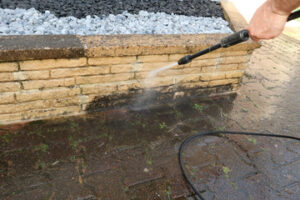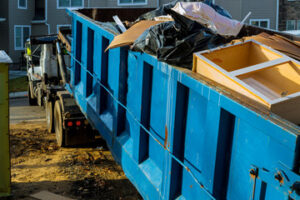Often overlooked, ceilings play a big role in the character and function of a home. They hide pipes, wires and ductwork and offer insulation.

There are many different types of Ceilings Perth. Some include plaster and drywall, while others feature wood or metal. Decorative finishes like coffered and vaulted ceilings add beauty to any room.
While ceilings are often forgotten in the design process, they are more than simply a flat surface that covers the top of a room. Ceilings hide wiring, pipes, and other structural elements, and they can be decorated with a variety of styles, paintings, tiles, and surface treatments. They can also enhance a room’s acoustics and provide insulation, as well as hold lighting systems.
Moreover, ceilings can help achieve brand alignment by creating a space that captures and communicates a company’s identity. For example, a ceiling incorporating contemporary patterns and forms that fit a brand’s aesthetics can help make an office feel more welcoming to employees and visitors. Additionally, ceilings can conceal noise absorption materials that contribute to a productive workspace. Moreover, a modern technical ceiling can include a series of modular panels that allow for easy access to electrical conduits, sprinkler systems, and HVAC ducts.
Ceilings are also a critical element of healthcare environments. They can help ensure patient safety, improve operational efficiency, and reduce costs. To accomplish these objectives, it is important to adhere to the FGI Guidelines for Healthcare Environments. The Guidelines set a high standard for safety, security, and operational performance.
A ceiling can be constructed of a variety of materials, including plaster, drywall, wood, and metal. However, many commercial ceilings are composed of a suspended system, which consists of a grid of metal tracks into which ceiling panels or tiles are inserted. These tiles are often made from soft materials such as gypsum, mineral fiber, fiberglass, and stone wool. They can be shaped, perforated, and textured to meet specific acoustic requirements.
Aside from their acoustic properties, these soft panels can be shaped into free-floating islands or suspended pods that may be combined with perimeter trim for a custom layout and visual accents. In addition, they are available in a variety of sizes, shapes, and finishes to match any design style or building materials.
These systems are commonly used in offices, schools, and hospitals because they provide an attractive appearance while hiding piping, wiring, and other structural elements. They are also easier to clean and maintain than hard-panel ceilings, which require extensive maintenance. In addition, they are often made from fire-resistant materials to prevent the spread of fire.
Design
While walls and floors often receive the most attention when it comes to decorating, ceilings can offer a large canvas for creativity. Adding different elements to the ceiling can add visual interest and create a focal point that’s unlike any other part of a room.
Choosing the right ceiling design can also help improve air flow. Taller ceilings can make it easier to circulate warm and cool air throughout a room, which can help reduce heating and cooling costs.
The most common type of residential ceiling is known as a conventional ceiling. This is a flat surface that’s typically made of low-cost materials. It’s a great choice for hiding electrical, plumbing and other systems. Conventional ceilings are also easy to paint, making it simple to change the look of a room.
There are many different options for decorative ceilings, including coffered ceilings and exposed beams. These designs can add architectural dimension and a sense of grandeur to a space. Coffered ceilings are a series of recessed panels that form a grid layout and are typically made of wood for a classic, traditional look. Exposed beams add rustic charm and a cozy, cabin feel.
Ceilings can also be decorated with wallpaper and wood paneling, creating a unique aesthetic for a room. For example, patterned wallpaper can instantly brighten a room while wood paneling offers natural warmth and texture. In some cases, ceilings are even painted with artwork. This is becoming increasingly popular and allows homeowners to express their personality and style through their ceilings.
For a more subtle way to add character, consider changing the color of your ceiling. Using a lighter or darker shade than the accent wall colors will make your ceilings stand out without overpowering the space. You can also play with different textures on your ceiling, like a herringbone or plank design, or use a more ornate style of molding.
If your home has an interesting architectural feature on the walls, such as wainscoting or paneling, you can extend those details to the ceiling to create a more cohesive look. For example, if you have herringbone wainscoting on the walls, painting your ceiling a matching or slightly lighter shade of blue can bring that same visual effect to the space.
Materials
The material chosen for a ceiling is an important part of its design. It can be used to create a specific look or to meet practical needs, such as fire resistance and acoustic management. It can also help to define a space, add texture and visual interest, and reflect light.
Some common ceiling materials include gypsum, mineral fiber, fiberglass and stone wool. These materials are soft and can be molded into different textures for a decorative look. They are also easy to work with and offer a variety of color and texture options. In addition, they can be acoustically engineered to reduce noise and vibrations.
Metal ceilings are another option. They can be made from a variety of metals and are available in different sizes, edge details and finishes. They can be suspended using a variety of methods including an exposed grid system or as panels that are clipped into place. Metal ceiling panels are also available with a range of edges including square edge, 24mm tegular and 15mm tegular that are attached on an exposed grid.
In terms of acoustic properties, these ceilings are ideal for commercial spaces because they absorb sound well and provide good insulation. These types of ceilings are also durable and easy to install. However, they do not provide as much structural support as other materials. In addition, they may not offer the same level of moisture protection as other materials.
Other types of ceilings include coffered ceilings and molding. Coffered ceilings are a series of recessed sections in a grid layout that add depth and character to a space. They are often decorated with trim and can be painted to match the wall color. Molding is a decorative element that can be added around the perimeter of a room to hide the gap where the ceiling meets the wall.
Maintenance
Whether painted, plastered or tiled, ceilings require regular cleaning to maintain their appearance and extend the life of the material. A clean ceiling can help to prevent water damage, promote healthy air quality and improve safety. By using commercial-grade equipment and supplies, implementing training procedures and adhering to a cleaning schedule, facility managers can achieve thorough, safe and efficient cleaning of high surfaces.
Stains on the ceiling can be unsightly and may indicate the presence of a leak, smoke or other issue that needs to be addressed. In the case of water stains, it is important to identify the cause and fix the problem in order to prevent further damage. Mould or mildew stains are best addressed by identifying and correcting the source before applying a bleach solution.
Regularly dusting the ceiling with a soft microfiber cloth or vacuum cleaner attachment can reduce dirt buildup and keep the tiles looking clean. Regular maintenance can also identify minor issues such as cracks or a loose grid, which can then be fixed before they become more serious.
If you do decide to repaint the ceiling, a good rule of thumb is to paint the ceiling with a light coat of primer and then apply two thin layers of paint. Once the paint has dried, a cloth should be used to remove any remaining soap residue and then the ceiling should be wiped down again to ensure that all areas have been thoroughly cleaned. If there are any areas that require touch-up painting, use the same colour and finish as the existing ceiling paint for a seamless result.
One of the best things you can do to maintain your manufactured home’s interior is to install soundproofing materials on the ceiling. This helps to eliminate any unwanted noise that could interfere with a relaxing and peaceful night’s sleep.
Ceilings are a crucial part of the interior of a home, and they can have a significant impact on its resale value when it comes time to sell. By keeping them clean and well maintained, you can ensure that they are in a state of good condition, making them more attractive to potential buyers.








